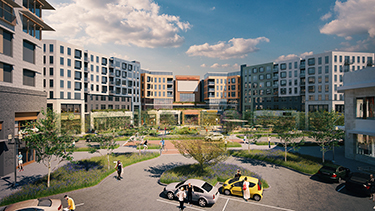|
Subscribe / Renew |
|
|
Contact Us |
|
| ► Subscribe to our Free Weekly Newsletter | |
| home | Welcome, sign in or click here to subscribe. | login |
Architecture & Engineering
| |
 |
October 26, 2017
Survey: Code Unlimited
Specialty: Building code and fire consulting
Management: Samir Mokashi, principal/owner; Asawari Mokashi, principal/owner; Eduardo Signorelli, principal and Seattle office manager
Founded: 2005
Headquarters: Portland
2016 revenues: $1.8 million
Projected 2017 revenues: $2.5 million
Projects: Urban Visions’ 2nd & Pike apartment tower, Seattle; CenterCal Properties’ The Village at Totem Lake redevelopment, Kirkland; Vulcan Real Estate’s Block 48 mixed-use development, Seattle
Samir Mokashi, a co-owner and principal, discussed his firm’s new Seattle office and why code consulting deserves more respect.
Q: You’ve just opened a new office in Seattle. Is this an expansion?
A: Our Seattle office first started as a one-person basement home office, then moved to a sublet space within a local architecture firm. We recently expanded into our new office location to accommodate our growing staff and projects in the region. This year has seen a sharp uptick in the number of clients and size of projects in this office, and we expect that trend to continue through 2018 and beyond.
Q: What range of services do you provide?
A: Our principals and staff have over 100 years combined industry experience in ADA/accessibility evaluation and guidance, land-use and zoning guidance, building code evaluation and guidance, compliance alternatives and appeals, code training seminars, jurisdictional negotiations, fire code evaluation and guidance, fire detection and suppression guidance, smoke control strategies and CFD modeling, seismic evaluations as well as hazardous materials management.
Q: Which parts of your business are in highest demand?
A: We work in multiple markets, which has allowed us to ride the ups and downs in individual markets and continue to grow overall.
In the Seattle region, our services are in highest demand in the residential, educational, health care, commercial and high-rise markets, with an emphasis on compliance alternatives and fire-related services. We are also experiencing growth overall in the military market sector in Alaska and Washington, as well as other regions.
Q: How has your work evolved in recent years?
A: Early on, clients came to us after they ran in to trouble, but now we are at the front end and able to provide more guidance in the early design phases.
We are able to facilitate great architecture because we help the designers push the regulatory boundaries while developing alternate compliance paths that make the buildings safer and healthier. Some examples are the support we offer for cross-laminated timber (CLT) projects and the innovative exterior wall construction of chemical-free lumber and mineral wool.
Additionally, we have added a lot of fire services, including complex CFD modeling and analyses stamped by fire protection engineers. We expect our unique capabilities will expand even more with the advances in computer technology and more green building materials entering the market.
Q: What are the biggest challenges you face day to day?
A: Finding well-trained staff! We teach classes to professionals and college students to introduce them to our knowledge and methods in the design of safe buildings.
Our principals are currently working with the University of Oregon, where students and professors have a design studio to develop a concept for Lane County Courthouse using CLT systems. This is a collaboration between the university, county and other professionals.
We are privy to groundbreaking research, which is being converted to design guidelines that can be transferred to the real-world application after the studio is completed. This is just one extra effort we put into developing future staff and methodology.
Beyond this we are fighting the presumption that code is boring, rigid and lacks creativity. A common expression even from our staff is, “I didn’t think it would be so exciting to work at Code Unlimited.”
Even when I give code classes, the reaction is, “I didn’t think code could be so fun!”
Q: What’s a change you’d like to see in the industry?
A: We would like to see recognition that code compliance should be its own discipline or at least a specialty that crosses over architecture and engineering industries. It would be great to have our own awards, or any other opportunity to showcase our talent!
Other Stories:
- Ice Box Challenge: a cool test of Passive House
- Survey: IA Interior Architects
- Surveys: NAC Architecture
- Survey: AHBL
- Survey: Lemons Architecture
- Is growth only benefiting a small segment in Seattle?
- Rock wool’s new role: protecting exterior wood stud walls
- Get ready for the new year — and new energy codes
- After 10-year engagement, Kinects inverts ‘wedding cake’
- WSU cultural center: ‘How are you going to build this?’
- High-performance building? Start with early design analysis
- How ‘affordable’ housing is disappearing in Seattle
- How long will your AV last? Consider your cell phone
- Survey: Arup



